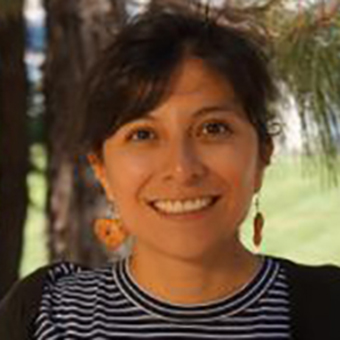Guillermina Ramirez-San Juan
Research Description
Biophysical mechanisms underlying flow generation by cilia arrays
Essential functions for life that range from swimming in single cell protists to mucus clearance in humans require the generation of long range flows with a specific topology. To generate these large scale flows thousands of micrometer-scale motile cilia must integrate their activity across centimeter-scale surfaces. The goal of our lab is to identify the key physical properties of individual cilia that control the collective phenotypes of a cilia array and the structure of the flow it generates. To truly understand how physical observables interface with biological mechanisms we aim to uncover the molecular pathways that control these key parameters.

We approach our research from an interdisciplinary perspective, combining the frameworks of cell and developmental biology, fluid mechanics and active matter. Day to day we do live microscopy, molecular perturbations, quantitative image analysis and collaborate closely with theorists to develop computational and theoretical models. By studying a variety of multiciliated cells and organisms we aim to elucidate the biophysical mechanisms that link cytoskeletal patterning, cilia organization and flow generation.

Selected Publications
- Ramirez-San Juan G.R., Mathijssen A.J.T.M., He M., Jan L., Marshall W., and Prakash M. (2019) Multi-scale spatial heterogeneity enhances particle clearance in airway ciliary arrays. bioRxiv. doi: https://doi.org/10.1101/665125
- Cetera M.*, Ramirez-San Juan G.R*, Oakes P.W., Lewellyn L., Fairchild M.J., Tanentzapf G., Gardel M. L. and Horne-Badovinac S. Epithelial rotation promotes the global alignment of contractile bundles during Drosophila egg chamber elongation. Nature Communications, Nov 2014. *co-first author
- Ramirez-San Juan G.R., Oakes P.W. and Gardel M. L. Contact guidance requires spatial control of leading edge protrusion. Molecular Biology of the Cell. Apr 2017.
For a complete list of publications visit: livingpatterns.group
 Assistant Professor of Biology and Physics
Assistant Professor of Biology and Physics